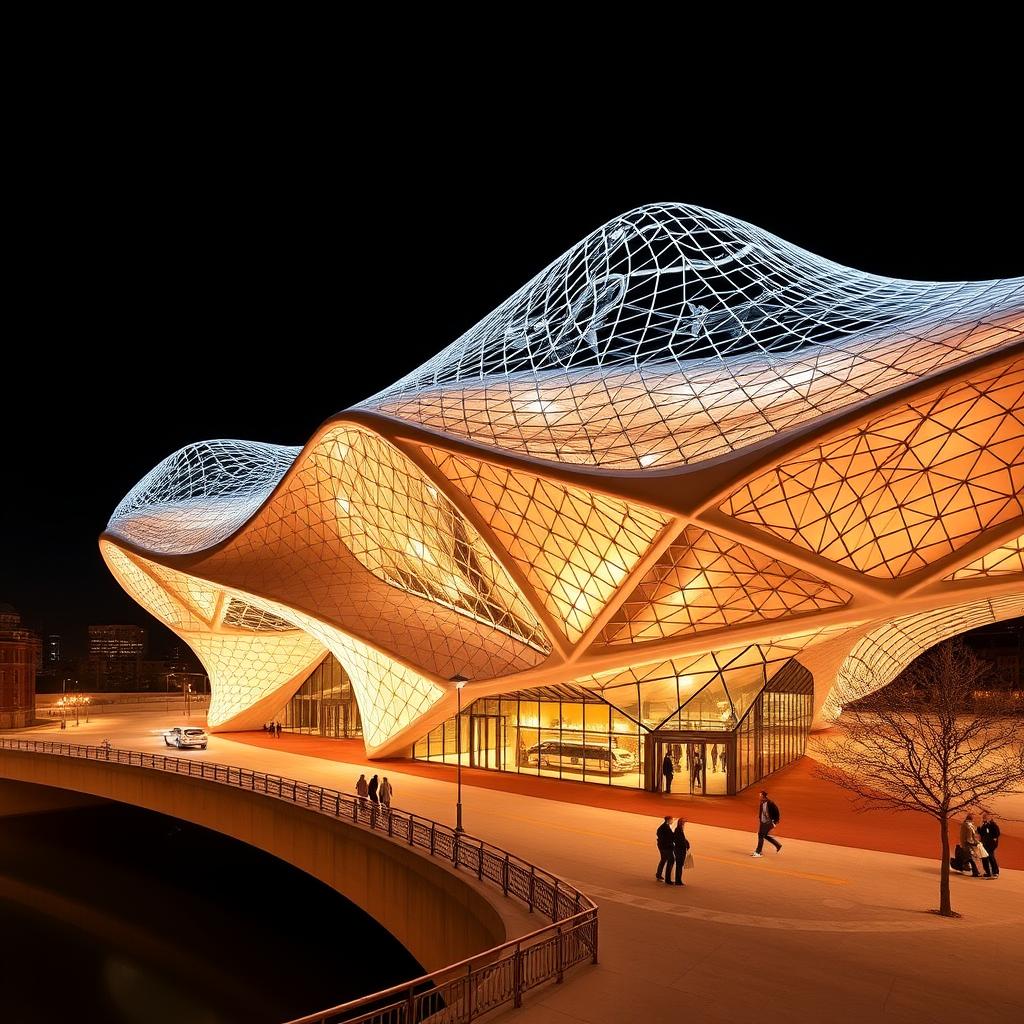
Exploring Parametric Design: The Future of Architecture
The world of architecture is undergoing a transformative shift, driven by technology and innovation. One of the most exciting developments in this field is parametric design an approach that blends computational algorithms with design creativity to produce structures that are dynamic, efficient, and visually captivating. But what exactly is parametric design, and why is it becoming such a game-changer in architecture?
What is Parametric Design?
Parametric design refers to a process in architecture where specific parameters or rules are set, allowing the designer to create complex forms and systems through algorithms. Instead of manually drawing every detail, architects can input data related to environmental conditions, structural stability, material performance, and aesthetic preferences. The software then generates and modifies design options in real time based on these parameters.
This approach allows for incredible flexibility, enabling designers to quickly explore a multitude of design possibilities and refine them according to real-world constraints and goals.
The Advantages of Parametric Design
-
Complexity and Innovation Parametric design empowers architects to move beyond traditional geometric shapes and create innovative, organic forms that would have been difficult, if not impossible, to design by hand. From flowing, curved facades to intricate lattice structures, this design method expands the boundaries of architectural creativity.
-
Efficiency in Design and Construction One of the greatest benefits of parametric design is its ability to optimize efficiency. By inputting parameters such as budget, materials, and environmental factors, architects can automatically generate designs that meet all specifications. This reduces the time spent on iterations and can lead to more cost-effective solutions.
-
Sustainability and Environmental Responsiveness Parametric tools allow designers to integrate environmental data into the design process. By analyzing solar paths, wind flows, and local climate conditions, architects can design more energy-efficient and environmentally friendly buildings. Parametric design enables the creation of adaptive facades that respond to sunlight and temperature, reducing the need for artificial lighting and HVAC systems.
-
Customization and Personalization With parametric design, customization is limitless. Each design can be tailored specifically to its location, context, and user requirements. For example, residential buildings can be designed to adapt to individual family needs or preferences, with elements such as window placement, shading, and even the layout of rooms optimized for the specific site.
Iconic Projects Using Parametric Design
Several groundbreaking projects around the world have embraced parametric design, showcasing its potential to revolutionize architecture:
-
The Heydar Aliyev Center in Baku, Azerbaijan, designed by Zaha Hadid Architects, is one of the most iconic examples. Its fluid, wave-like structure defies traditional architectural rules, creating a sense of movement and dynamism.
-
The Al Bahar Towers in Abu Dhabi use parametric design to create a responsive façade that adjusts to sunlight. This adaptive skin reduces solar gain, cooling the building naturally and enhancing its aesthetic appeal.
-
The Beijing National Stadium (Bird’s Nest) is another masterpiece where parametric design helped to generate its complex, web-like structure, which was both visually stunning and structurally efficient.
The Future of Parametric Design in Architecture
As the architectural world continues to evolve, parametric design will likely play an even greater role in shaping the cities of tomorrow. With advancements in artificial intelligence, 3D printing, and sustainable materials, parametric design could lead to a future where buildings are not only more adaptive and efficient but also built with unparalleled precision.
Moreover, as urban populations grow and the demand for resilient, energy-efficient buildings increases, parametric design will enable architects to solve complex challenges at scale, designing smart cities that are sustainable and highly customized to their environments.
Conclusion
Parametric design represents a paradigm shift in architecture, offering an innovative approach to solving modern design challenges. By harnessing the power of algorithms and data, architects can create structures that are not only visually stunning but also more efficient, sustainable, and adaptive to their surroundings. As this design method becomes more mainstream, it promises to transform the built environment, making it more responsive to the needs of both people and the planet. The future of architecture is here and it's parametric.